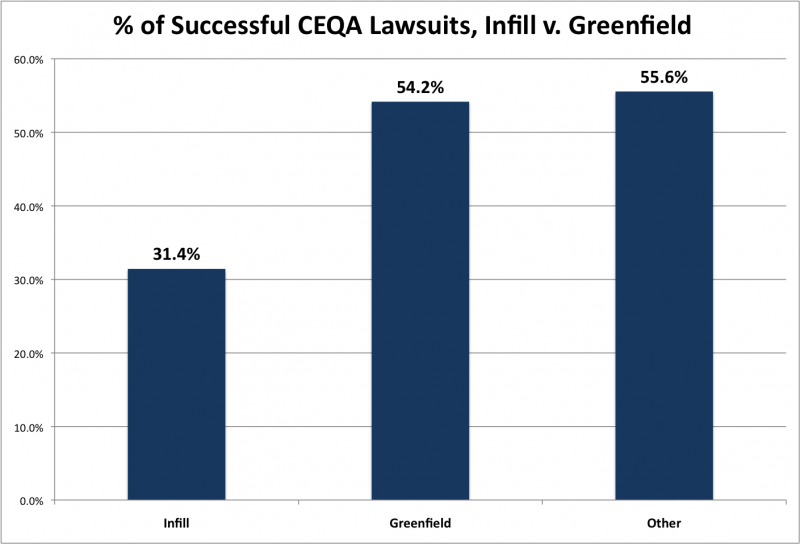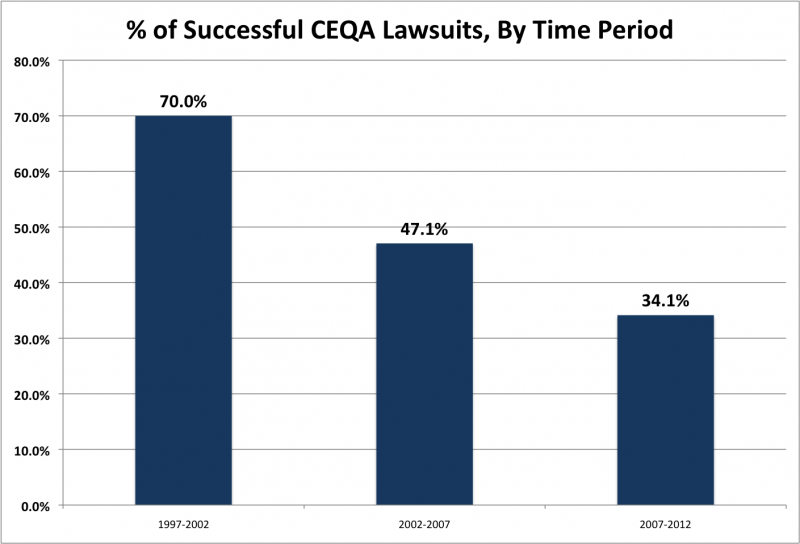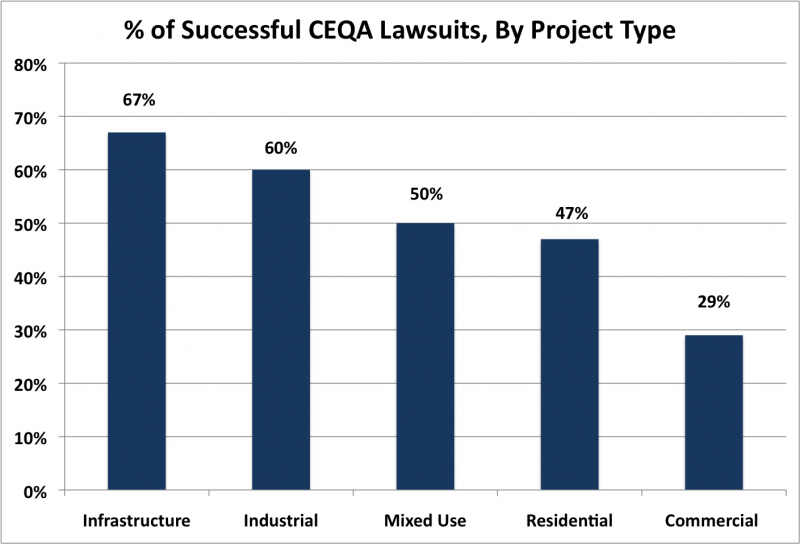Two weeks ago, CP&DR reported on a study by the law firm of Holland & Knight that broke down 95 legal challenges to projects under the California Environmental Quality Act over the past 15 years. The study provided a comprehensive look for the firs ttime - finding, for example, that 60% of the cases challenged "infill" development projects as opposed to "greenfield", and over 70% of the cases were brought forth by local organizations.
But what about the outcomes of these cases? Sixty percent of projects challenged may be "infill" type projects, but are they more likely to be shot down than "greenfield" type projects? Similarly, 73% of the cases were filed by local organizations, but to what extent are they victorious? The 15-year time period shows a success rate for plaintiffs of close to 50%, but did this trend hold over time?
Seeking these answers, CP&DR broke down the Holland & Knight study to take a closer look at what's really going on. Here are some highlights:
* Though more infill projects are challenged, these challenges are much less likely to be successful. Only 31% of infill challenges were successful, compared to 55% of greenfield challenges.

* The success rate for legal challenges has been dropping steadily since 1997 - from 70% in the 1997-2002 period to only 34% in the 2007-2012 period.

* Legal challenges are most likely to succeed against infrastructure and industrial projects (more than 60%). Challenges were least likely to be successful against commercial projects (less than 30%).

* Legal challenges against public projects were more successful than legal challenges against private projects, though the difference was small (50% to 44%).
* Local plaintiffs were more likely to succeed than non-local plaintiffs, though again the difference was small (49% to 41%).
